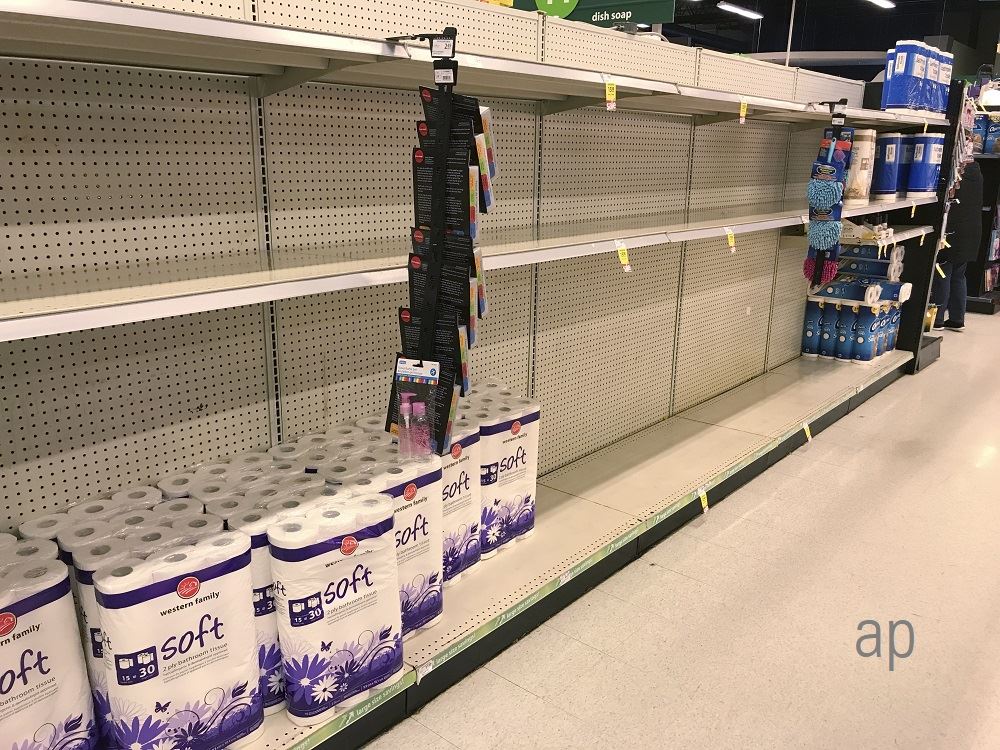
Editor's note: Read the latest on how the coronavirus is rattling the markets and what you can do to navigate it.
The financial crisis of 2008 happened against a backdrop of unprecedented debt levels in financial institutions and homes. This time around, the corporate world is floating in a sea of debt. The coronavirus might be the immediate cause of market jitters, but could it also be a detonator leading to an overall collapse? Some experts don’t think so, others aren’t so sure.
The Institute of International Finance started its March 12th Weekly Insight with this comment:
“Catalyst for a meltdown? As we note in our Global Debt Monitor, angst over the corporate debt bubble is nothing new. But the current high-uncertainty, high-volatility backdrop has struck directly at the outlook for economic growth and corporate profitability. The speed of the decline in market confidence is also a reflection of massive financial imbalances—notably high and rising corporate debt.”
A sea of debt
The IIF calculated in the January Weekly Insight that total non-financial corporate debt (NFCD) at the end of Q3 2019 amounted to US$ 74.4 trillion, a higher level than total government debts of US$ 69.2 trillion, bringing total world debt to an unprecedented amount of US$ 252.6 trillion, or 322% of world GDP. The phenomenon is indeed global, the share of NFCD to GDP reaching 75% in the U.S., 108% in the Euro zone and 157% in China. This is dangerous, as the IIF points out that over US$ 19 trillion of syndicated loans and bonds will mature this year across emerging and mature markets, with emerging markets accounting for 30%.
Corporate bonds alone accounted for US$ 13.5 trillion at the end of 2019, twice the amount outstanding in 2008, according to a February 2020 OECD report on corporate bond debt.
The deteriorating quality of these bonds is troubling. In 1990, AAA-rated bonds accounted for 25% of global bonds issued; today, that proportion has fallen to 0.73%. The cut just above junk bond status, BBB, that represented 18% of issues in 1990, now stands at an all-time high of 51%. Only 30% of the global outstanding stock of bonds is now rated A or above, “indicating that default rates in a future downturn are likely to be higher than in previous credit cycles,” notes the OECD study.
Two facts stand out. In the U.S, ownership of corporate bonds is concentrated in the hands of insurance companies and pension funds (49%), and investment funds, mainly mutual funds and ETFs (28%). The US dollar-denominated debt held by non-bank borrowers outside the U.S. was nearly US$ 12 trillion at the end of 2019, double the exposure 20 years ago.
Don’t panic... yet
Do all these numbers signal an imminent debt meltdown and the need to run for your life? Of three market analysts we’ve spoken to, two are somewhat upbeat, while the third is cautious.
One view considers that pockets of trouble will emerge, losses will be hard and concentrated, but the economy and the financial system will emerge somewhat unscathed from the present ordeal. “We don’t see a recession like the 2008 one where six quarters in a row were negative,” says Yanick Desnoyers, chief economist at Addenda Capital. “The shock will be concentrated and temporary.”
“I don’t think this is a credit crisis about to burst,” chimes in Jurrien Timmer, director of Global Macro at Fidelity Investments. A lot of the present credit spreads, that are increasing the cost and difficulty of borrowing for fragile companies, “are concentrated in the oil market, which represents 12% of high-yield bonds.”
“Zombie” corporations (that have insufficient profits to cover interest payments on their debt) are certainly a cause for concern, recognizes Timmer, but he believes the market has the means “to weed out those weak players. I don’t think this is a systemic problem; it rather lies in specific pockets.”
Both analysts note the strong pre-emptive responses of central banks and governments in the U.S., Canada and elsewhere to supply markets and companies with liquidity to carry companies, especially weaker small and medium sized ones, through the immediate hardship.
The shock will extend over the first quarter and part of the second, believes Desnoyers. But going forward, we will land in a lethargic economy that will extend over a long period of time, suffering from the low productive investments that corporations have made and who have rather used credit to effect massive share buybacks.
Not everything is calm
Krishen Rangasamy, senior economist at National Bank of Canada, warns us not to be complacent. Things can probably be ironed out, he hopes, while keeping an eye on two factors – the rise of the U.S. dollar and its effect on emerging economies, and the concentration of corporate debt holdings at insurance companies. The strong dollar increases financial costs and hedging costs for emerging markets whose production engines throttle world economic growth. As long as demand comes back to life in the advanced economies, things could be okay, he thinks, but if demand falters, defaults and bankruptcies could come back to bite advanced economies.
What he fears the most is a blowout in the ranks of insurers that could wreak havoc, just as the Lehman Brothers blowout in 2008 precipitated the crisis. “Nobody thought that a house like Lehman could fail, yet it did. We can’t afford to be complacent,” Rangasamy warns. And we should remember, he points out, that central banks, after recent rounds of stimulus and nearing negative rates, don’t have much ammunition to fall back on if conditions continue to worsen.
What should investors do?
Desnoyers and Timmer offer two pieces of advice. “I’d go for preferred shares and ordinary shares of big solid companies, like Canadian banks, with strong credit ratings. Favour stocks and bonds of solid business models that investors have fled from in panic.”
Timmer sees this as an occasion to stock up on high-yield bonds “If you need income for retirement, he says, with yields at 4.5%, there’s some value to be picked up there. Look for good companies that have been indiscriminately margin-called.




















